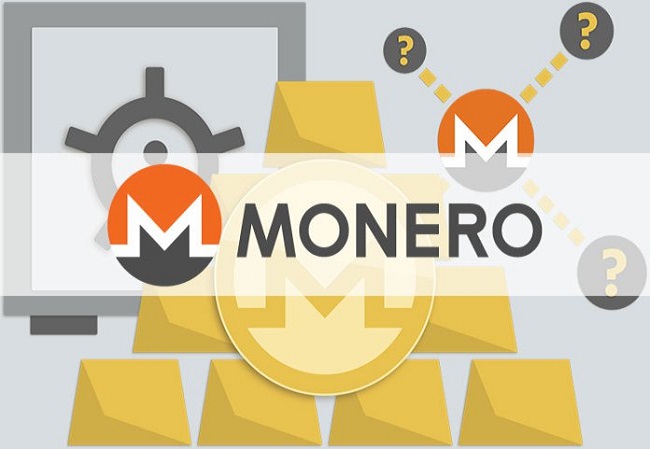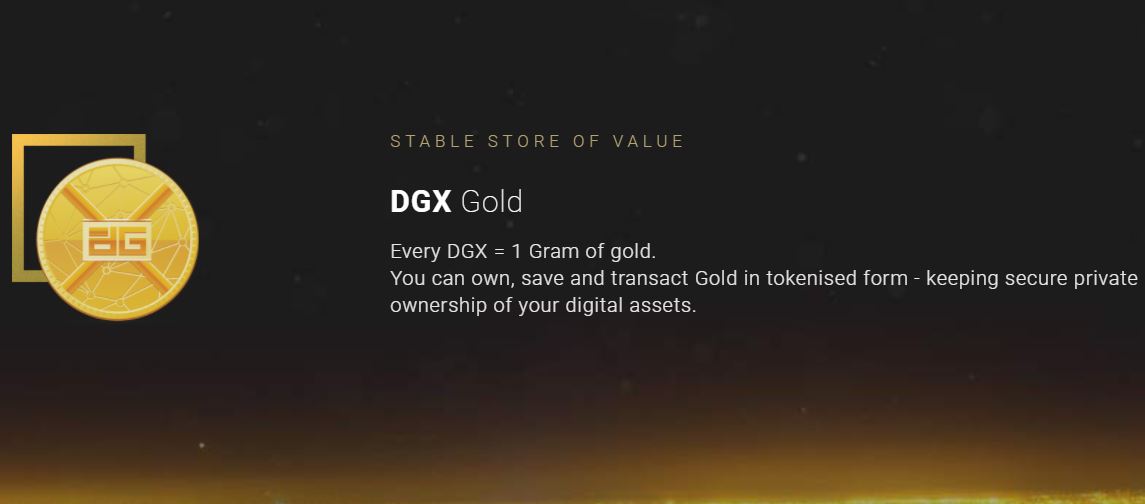What Are the Differences? Bitcoin, Monero, Ethereum, And Other Cryptocurrencies Compared
Ten years ago, there was just Bitcoin, the original blockchain-based cryptocurrency. Today, there are currently over 1,500 cryptocurrencies. Initially, most of the new coins tried to clone Bitcoin and just change how the Proof of Work (PoW) algorithm worked. Since then, many new coins have tried to outgrow Bitcoin and provide a new type of technology, which is how we ended up with multiple types of digital coins.
Transaction Coins
Of course, the most important transaction type coin is Bitcoin. Bitcoin was created by an anonymous author (or group of authors) using the alias “Satoshi Nakamoto,” with the goal of enabling people to do fast transactions from anywhere in the world with low fees and without any third-party manipulation.
Although Bitcoin was the original “cryptocurrency,” lately more people have started calling it a “store of value,” and we’ve seen some major companies stop supporting it because the fees were getting too expensive. Plus, Bitcoin still hasn’t solved the volatility issues, which means it’s difficult for businesses to work with it unless they use a third-party service to automatically convert Bitcoin into USD when customers purchase their products.
Bitcoin has implemented some new features such as SegWit and the Lightning Network, which allows exchanges or companies to support “off-chain” (outside of the blockchain) transactions that have low or almost zero fees. However, for now adoption is still slow, and it remains to be seen what impact Segwit and Lightning Network will have on future Bitcoin transactions.
New coins that are focused on delivering a high number of transactions per second and low fees have appeared in the past few years. The coins with the highest number of transactions include cryptocurrencies such as Ripple, Stellar, IOTA, Nano, NEM, Litecoin, Bitcoin Cash, and potentially even Ethereum.
Privacy Coins
Many people have misunderstood Bitcoin’s privacy features, assuming that Bitcoin payments were by default anonymous. However, that’s not quite true. At most, Bitcoin wallet addresses and transactions are pseudonymous in the same way you can create a Twitter account that uses a random nickname instead of your real name and you don’t feed it your real name anywhere in the account. However, Twitter will still know your IP address and anyone you communicate with on the platform, as will everyone else (because Twitter is public).
Similarly, all of your transactions are done on the public ledger/blockchain and anyone who decides to inspect your transactions can see from who you purchased products or to whom you paid money. The only way to have truly anonymous or private transactions is to use Tor for everything and to avoid tying any of those transactions to your real name, location, and so on, just as you would do if you wanted to create a truly anonymous Twitter account.
Get Tom's Hardware's best news and in-depth reviews, straight to your inbox.
Some cryptocurrencies solve this issue in different ways (although some of them can also integrate with Tor). One of the most popular and trustworthy is Monero, which is generally regarded as “untraceable.” However, there are still ways in which you can err and reveal your identity, if you’re not careful how you do your transactions.
Zcash is another privacy-focused cryptocurrency that uses a brand-new cryptography technique called "zero knowledge proofs" to create anonymous transactions. However, these transactions are not enabled by default, because they use too many computational resources. The default transactions are just as transparent to the network as Bitcoin transactions are. The project’s team has promised to improve the performance of anonymous transactions significantly in the future.
Other lesser known privacy coins include DASH, Verge, PIVX, ByteCoin, Komodo, DeepOnion, etc.
Programmable Blockchains
Ethereum is the most popular “programmable blockchain” platform that allows developers to build other apps, cryptocurrencies, or “smart contracts” (automated scripts that enforce a contract between two or more parties) on top of it.
Smart contracts promise to be a revolution in the finance industry, but also in other industries such as healthcare, real estate, or any industry that might benefit from the radical transparency and accuracy provided by smart contracts.
Ethereum also supports the creation of “tokens,” which are a representation of certain assets on a blockchain. The tokens can represent other cryptocurrencies, commodities, or reward/loyalty points. Tokens are then distributed to the public through Initial Coin Offerings (ICOs), which are somewhat similar to companies offering an Initial Public Offering (IPO) when they go on the public stock market.
Developers can also create “decentralized applications” on programmable blockchains, such as identity and reputation systems, voting and governance platforms, financial apps, decentralized file storage apps, messaging apps, and more.
Some of the most popular programmable blockchain cryptocurrencies, besides Ethereum, include Cardano, EOS, Lisk, NEM, Neo, Qtum, etc
Store Of Value/Stablecoins
As we already mentioned, some people consider Bitcoin a transaction cryptocurrency, whereas others see it as more of a store-of-value crypto-asset or as “digital gold.” Bitcoin is considered a store of value because all of the other (over 1,500) cryptocurrencies seem to rise or fall in value based on how well Bitcoin does. If Bitcoin has a few good months, then so will the other cryptocurrencies. If Bitcoin crashes, then so do the other coins.
However, most other coins tend to crash much harder than Bitcoin does, because some people convert money into USD, while others prefer to keep them in Bitcoins. These people keep their money in Bitcoin either because they believe Bitcoin will rise again even more in the future, or because converting into USD means they have to pay taxes for that year, as they’re essentially “taking profits.” This is what keeps Bitcoin’s value relatively high when the whole cryptocurrency market sees a decline.
When the market dips, though, Bitcoin does tend to lose much of its value, which is why some cryptocurrency investors convert to “stablecoins.” A stablecoin is a coin that is a price-stable cryptocurrency, with its value tied to a fiat currency such as the U.S. dollar.
When people buy and sell stablecoins, the value will self-correct to be as close as possible to the value of USD (within 3%-7%). Therefore, even if the cryptocurrency market declines by 70%, those who have put their money into stablecoins before the decline will not lose nearly as much in value as everyone else.
The most popular stablecoin in the past few years has been Tether. However, Tether is also highly controversial right now, because the company behind it seems to continue to print Tether out of thin air without showing much evidence that they’re backing it with real USD, like they were supposed to do.
Alternatives to Tether include MakerDAO’s Dai, TrueUSD, Basecoin, Bitshares’ BitUSD, Kowala’s kUSD, etc.
Another store of value cryptocurrency that’s somewhat similar to stablecoins is DigixDAO’s DGX token, which is backed by (real) gold instead of by fiat currencies. That means its value shouldn’t be quite as stable as the value of stablecoins, because fiat currencies are much more stable than goal in general. However, it should still be significantly more stable than Bitcoin or most other cryptocurrencies, as gold is still far less volatile than cryptocurrencies are.
At the time of this writing, the cryptocurrency market has suffered quite a beating from the sellers, as negative news about major exchange hacks and government regulations abound. However, unless this time really is different, then the market should rebound again, as it’s done plenty of times in the past decade. Then, we should be able to see even more types of coins and blockchain technologies emerge as developers continue to innovate.
Lucian Armasu is a Contributing Writer for Tom's Hardware US. He covers software news and the issues surrounding privacy and security.
-
stdragon That's just it - Crypto was supposed to be the internet equivalent of Western Union for transactions. Instead, it's become a speculative store of wealth ("Digital tulips"); counter to its intended purpose.Reply
Given the infinitem of standards, if you're looking for a store of wealth, I'm more in favor of the PHYZ (Pt, Au, Ag, and Pd). -
Integr8d There must be 5 mid-level GPU's, sitting on a shelf, somewhere in middle America, that haven't been bought. Hence, this article.Reply -
Scott_123 This page is unreadable as the ads keep re scrolling the page to stay inside the viewing area!!! Tom's hardware has become intolerable and after 20 years I'm now done with the site.Reply -
Olle P "A stablecoin is a coin ... with its value tied to a fiat currency"Reply
So a stablecoin is a fiat currency tied to another fiat currency, that also has no inherent value?
"Another ... is DigixDAO’s DGX token, which is backed by (real) gold instead of by fiat currencies. That means its value shouldn’t be quite as stable..."
Quite the opposite! One gram of gold will *always* be worth one gram of gold, whereas fiat currencies can have their gold value differ a lot.
The USD was tied to gold until USA had spent all its resources by sending people to the Moon while vaging war in Vietnam at the same time. Instead of just declaring itself bancrupcy they had to let the USD become a fiat currency and now the USD value in gold is much lower than it used to be.
Gold (and silver) is *money*, the rest are just currencies. -
stdragon Reply20898904 said:"Instead of just declaring itself bancrupcy they had to let the USD become a fiat currency and now the USD value in gold is much lower than it used to be.
Sovereign nations can't declare bankruptcy. Please see examples of hyperinflation in Weimar, Hungary, Zimbabwe, and modern Venezuela. It's a death-spiral. When a government is that much in debt, they spend their way into an oblivion much like a drowning person thrashes in the water to keep its head up. It's a wasted effort with an inevitable outcome.
20898904 said:Gold (and silver) is *money*, the rest are just currencies.
Agreed. But I do understand why we got off the Gold Standard for a whole list of reasons. But it was as they say "penny wise pound foolish". Now the Feds abuse at printing is coming back to haunt us in addition to the uncontrolled spending via our elected heros in office.
It's all moot at the end of the day. PHYZ, or BTC, doesn't matter. Just like what the ancient Romans did, all taxes must be paid back in the Denarius. And that requirement intrinsically sets the monetary standard.
-
kyotokid Reply
...agreed this cryptomining crap needs to be put to a swift end. It's taken two once reasonably affordable hobbies (gaming and CG art) and made them too expensive to enjoy anymore.20898572 said:There is no difference, all of it is pure cancer that needs to die in gutter.
-
Lostinlodos Olle p hit it spot on. In Gold I Trust is my fiscal motto! As long as digital gold reserves have actual gold backing it’s far safer than any coin or currency. Dollar up dollar down pound up pound down euro up euro...!Reply
An ounce of gold is worth... wait for it... an ounce of gold! That’s hard to beat! -
TJ Hooker Reply
Why are hobbies such as gaming or CG inherently more deserving of graphics cards than mining?20901103 said:
...agreed this cryptomining crap needs to be put to a swift end. It's taken two once reasonably affordable hobbies (gaming and CG art) and made them too expensive to enjoy anymore.20898572 said:There is no difference, all of it is pure cancer that needs to die in gutter.





